Design shapes our world in profound yet often overlooked ways. The homes, products, fashion, visuals, and experiences that define modern life were all intentionally envisioned and created by designers. While we easily take design for granted, the brilliant minds behind the most innovative and influential designs dared to shatter conventions and constraints.
The greatest designers are transcendent figures who reimagined entire disciplines. Architects like Frank Lloyd Wright and Zaha Hadid conceived buildings as avant-garde sculptural forms. Industrial designers like Dieter Rams and Jonathan Ive incorporated new materials and production techniques to create iconic products. Fashionistas like Coco Chanel and Alexander McQueen sparked revolutions with their sartorial expressions.
This exploration spotlights design pioneers across disciplines whose groundbreaking vision redefined their fields. From Alvar Aalto’s pioneering modern furniture to Isamu Noguchi’s sculptural lighting, we’ll discover the innovative thinkers who elevated the human experience through their creations. Their stories reveal design’s power to drive societal progress by synthesizing form, function, and conceptual thinking in radical new ways.
Get inspired by the captivating lives and masterworks of the designers who shaped our world. In understanding their daring creativity and imagination, we gain insights for envisioning a designed future that once again transforms how we live, work, and experience life.
Architecture
Alvar Aalto (1898–1976)
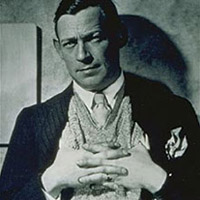
- Finnish architect and designer who pioneered a style blending modernism with organic, naturalistic philosophies
- Known for iconic bentwood laminate furniture like the Paimio Chair that achieved sculpted, free-flowing forms
- Humanist architectural designs focused on creating warm, immersive spatial experiences tailored to human senses and needs
- Ex: MIT’s Baker House dorm with curvaceous common areas and dynamic material palettes
- Rejected rigid modernist doctrines in favor of guiding users through environments
- He embraced regional vernaculars, integrating local materials and crafts into his modernist principles
- Ex: Wave-inspired wood Finnish Pavilion showcasing traditional craftsmanship
As one of the 20th century’s most influential architects and designers, Alvar Aalto left an indelible mark on modernism. He pioneered an innovative approach that merged the movement’s industrial principles with traditional craft and naturalistic philosophies. Aalto’s iconic bentwood laminate furniture, like the Paimio Chair, showcased his ability to sculpt organic, free-flowing forms using modern materials and techniques.
In his architecture, Aalto rejected rigid doctrines in favor of creating warm, human-centric experiences. He masterfully guided users through immersive environments with curvaceous spaces, dynamic material palettes, and integration of natural elements. Works like the Baker House dorm at MIT exemplify how Aalto tailored designs to human senses and needs.
Aalto further distinguished his approach by rooting modernism in vernacular traditions. He often incorporated regional materials, crafts, and motifs, as seen in his wave-inspired Finnish Pavilion. This synthesis of modernist philosophies with local cultural contexts created a rich, harmonious architectural language.
Through these innovations, Aalto expanded modernism’s boundaries and established a more humane, expressive, and contextual approach. His enduring influence stems from this pioneering vision that seamlessly integrated art, design, architecture, and the human experience.
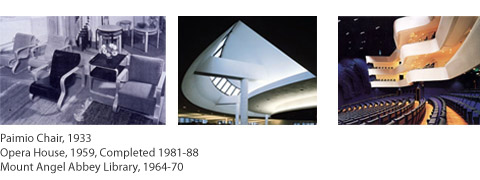
Norman Foster (1935-)

- British architect renowned for innovative designs that blend advanced technology with efficient functionality
- Pioneered the high-tech architectural style, using industrial materials like steel, glass, and exposed structural elements
- Ex: HSBC Building in Hong Kong with visible steel trusses and sunlit atrium
- Sustainable design philosophies and integration of green technologies
- Ex: Gherkin Tower in London with its energy-efficient, diagrid facade
- Signature works include the Reichstag restoration in Berlin and Hong Kong International Airport
- Transformed historic structures and engineered grand, light-filled public spaces
Norman Foster emerged as one of the most prolific and influential architects of the contemporary era. His innovative designs boldly express structural elements and integrate advanced technologies to create highly functional, sustainable environments. Foster’s pioneering high-tech style, exemplified by the HSBC Building in Hong Kong, celebrates industrial materials like steel and glass, often leaving them exposed to showcase their raw beauty and structural integrity.
Foster is also renowned for his commitment to green design principles. Many of his buildings, such as London’s iconic Gherkin Tower, incorporate energy-efficient systems, passive climate control strategies, and sustainably sourced materials. This eco-conscious approach has established Foster as a leading figure in the sustainable architecture movement.
Another hallmark of Foster’s work is his ability to sensitively restore historic structures while transforming them for modern use. His Reichstag restoration in Berlin preserved the building’s grandeur while adding a striking glass dome that floods the interior with natural light. Foster’s designs consistently push the boundaries of what’s possible with technology and engineering, yet remain grounded in a philosophy of simplicity, functionality, and sustainability.
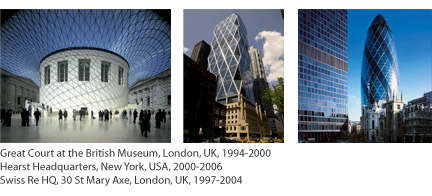
Eileen Gray (1878–1976)
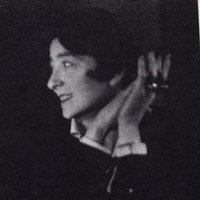
- Irish designer who revolutionized early 20th-century design with her modernist furniture and interiors
- Pioneered the use of industrial materials like tubular steel and chrome in furniture
- Ex: Adjustable E-1027 side table with its sleek, minimalist aesthetic
- Designed one of the most iconic houses of the modernist movement, Villa E-1027 in France
- Seamless integration of furniture, lighting, and interior design
- Emphasis on functionality, flexibility, and the human body
- Created lacquer furniture and interiors that merged Japanese aesthetics with Western modernism
- Ex: The non-conformist room divider screen featuring abstract geometries
Eileen Gray was a trailblazing designer whose work blurred the boundaries between architecture, interiors, and furniture design. She stands out as one of the few women to achieve international recognition in the male-dominated world of early 20th-century architecture. Gray’s designs were characterized by their sleek, minimalist aesthetics and innovative use of industrial materials like tubular steel and chrome.
Her most famous work, the Villa E-1027 in France, is considered a masterpiece of modernist architecture. The house showcased Gray’s holistic approach to design, with furniture, lighting, and interiors seamlessly integrated to create a fluid, functional living space. Every element was meticulously designed to serve the needs of the human body and to provide flexibility in use.
Gray also drew inspiration from Japanese design, creating exquisite lacquer furniture and interiors that merged Eastern aesthetics with Western modernism. Her famous non-conformist room divider screen, featuring abstract geometric forms, exemplifies this cross-cultural synthesis.
Throughout her career, Gray pushed against societal norms and expectations, forging a unique path in a field dominated by men. Her work continues to inspire with its timeless elegance, functionalism, and quiet radicalism. Gray’s legacy lies in her unwavering pursuit of a modernist vision that placed the human experience at the center of design.
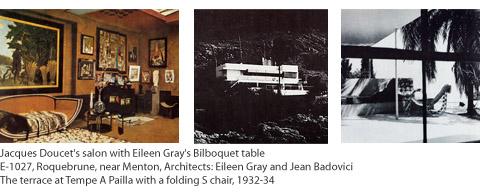
Zaha Hadid (1950-2016)

- Iraqi-British architect, first woman to win the prestigious Pritzker Prize
- Pioneered the deconstructivist style with fragmented, fluid geometries that defy traditional norms
- Ex: MAXXI Museum in Rome with its intersecting, curvilinear walls and ramps
- Signature parametric designs use advanced computer modeling to create complex, organic forms
- Ex: Heydar Aliyev Centre in Baku with its seamless, flowing facades
- Urban-scale projects that merge architecture, landscape, and infrastructure
- Ex: Beijing Daxing International Airport with its star-shaped layout and flowing interiors
Commentary: Zaha Hadid was a groundbreaking architect who redefined the possibilities of 21st-century architecture. Her avant-garde designs are characterized by their fluid, fragmented geometries that seem to defy gravity and traditional design principles. Hadid’s work often employed the deconstructivist style, which sought to break apart and reassemble conventional forms into dynamic, unpredictable compositions.
Hadid was also a pioneer in the use of parametric design, a process that uses advanced computer algorithms to generate complex, organic forms. Buildings like the Heydar Aliyev Centre showcase Hadid’s mastery of this technique, with its seamless, flowing facades that blend effortlessly with the surrounding landscape.
In her later work, Hadid began to explore architecture at the urban scale, creating vast, interconnected complexes that merge buildings, landscapes, and infrastructure. The Beijing Daxing International Airport, with its star-shaped layout and fluid interior spaces, exemplifies this approach.
Throughout her career, Hadid faced significant challenges as a woman in a male-dominated field. Yet she persevered, becoming the first woman to win the prestigious Pritzker Prize. Her work continues to inspire architects and designers around the world,
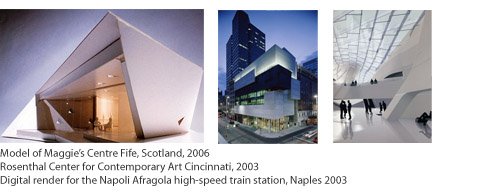
Charles Rennie Mackintosh (1868-1928)
- Scottish architect, designer, and artist, a key figure in the Arts and Crafts and Art Nouveau movements
- Pioneered the “Glasgow Style,” combining organic forms, geometric motifs, and Japanese-inspired minimalism
- Ex: Glasgow School of Art with its grid-like facade and sculptural interiors
- Designed iconic furniture pieces featuring high-backed chairs and floral motifs
- Ex: Hill House Chair with its tall, latticed back and minimalist form
- Holistic approach to design, creating unified interiors where every element was meticulously designed
- Ex: Willow Tea Rooms with their integrated furniture, stained glass, and decorative details
Charles Rennie Mackintosh was a visionary designer whose work bridged the gap between the Arts and Crafts movement and the birth of modernism. His distinctive “Glasgow Style” combined organic, floral motifs with geometric forms and a Japanese-inspired minimalism. The Glasgow School of Art, Mackintosh’s most famous building, exemplifies this style with its grid-like facade and sculptural, light-filled interiors.
Mackintosh was also a prolific furniture designer, creating iconic pieces like the Hill House Chair, with its tall, latticed back and simple, geometric form. His furniture often featured high-backed chairs, a motif that became synonymous with his name.
One of Mackintosh’s most significant contributions was his holistic approach to design. He believed in creating unified, immersive environments where every element, from the architecture to the furniture and decorative details, was carefully considered and designed. The Willow Tea Rooms in Glasgow are a prime example of this philosophy, with their integrated design scheme featuring custom furniture, stained glass, and decorative motifs.
Despite his short career and limited output, Mackintosh’s influence on 20th-century design was profound. His work anticipated many of the key principles of modernism, including the emphasis on functionalism, simplicity, and the integration of art and design. Today, he is celebrated as a pioneer of modern design and a key figure in Scotland’s cultural heritage.
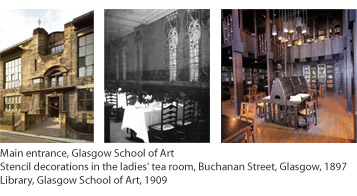
Richard Rogers (1933-)

- British architect known for his high-tech, inside-out architectural style that exposes structural and mechanical systems
- Ex: Centre Pompidou in Paris with its exposed steel framework and color-coded utilities
- Pioneered the use of prefabrication and modular construction techniques
- Ex: Zip-Up House prototype with its mass-producible, adaptable design
- Sustainable design focuses on incorporating green roofs, natural ventilation, and renewable energy
- Ex: Madrid Barajas Airport with its bamboo-clad terminal and energy-efficient systems
- Urban master planning and regeneration projects that prioritize public spaces and connectivity
- Ex: Greenwich Peninsula Master Plan with its mixed-use, pedestrian-friendly layout
Richard Rogers is a leading figure in the high-tech architectural movement, known for his distinctive inside-out style that celebrates the beauty and functionality of a building’s structural and mechanical systems. His most famous work, the Centre Pompidou in Paris, revolutionized museum design with its exposed steel framework, color-coded utilities, and open, flexible interior spaces.
Rogers was also a pioneer in the use of prefabrication and modular construction techniques. His Zip-Up House prototype, designed in the 1960s, proposed a mass-producible, adaptable housing system that could be easily assembled and modified by its inhabitants. This project anticipated many of the key principles of sustainable, flexible housing design that are now widely adopted.
In recent years, Rogers has become increasingly focused on sustainable design, incorporating green technologies and passive climate control strategies into his buildings. The Madrid Barajas Airport, with its bamboo-clad terminal and energy-efficient systems, exemplifies this approach.
Beyond individual buildings, Rogers is also known for his urban master planning and regeneration projects. He advocates for mixed-use, pedestrian-friendly urban environments that prioritize public spaces, connectivity, and community engagement. The Greenwich Peninsula Master Plan in London, with its integrated network of parks, public amenities, and sustainable transportation systems, demonstrates this philosophy in action.
Throughout his career, Rogers has been a vocal advocate for the social and environmental responsibilities of architects. His work challenges conventional notions of beauty and functionality, proposing a more honest, democratic, and sustainable vision of the built environment.
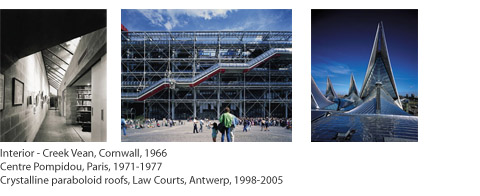
Frank Lloyd Wright (1867-1959)
- American architect, interior designer, and educator, widely recognized as one of the greatest architects of the 20th century
- Pioneered the Prairie Style, characterized by horizontal lines, flat roofs, and integration with the natural landscape
- Ex: Robie House in Chicago with its elongated form and continuous window bands
- Developed the concept of “organic architecture,” emphasizing harmony between buildings and their environments
- Ex: Fallingwater in Pennsylvania, a house dramatically cantilevered over a waterfall
- Innovative use of materials and technologies, such as reinforced concrete and precast concrete blocks
- Ex: Unity Temple in Illinois, one of the first buildings to feature exposed concrete
Frank Lloyd Wright was a towering figure in American architecture, whose career spanned over seven decades and left an indelible mark on the built environment. Wright pioneered the Prairie Style, a distinctly American architectural language characterized by its horizontal lines, flat roofs, and integration with the natural landscape. Houses like the Robie House in Chicago exemplify this style, with their elongated forms, continuous window bands, and open, flowing interior spaces.
Central to Wright’s philosophy was the concept of “organic architecture,” which sought to create buildings that harmonized with their natural surroundings. Fallingwater, a house dramatically cantilevered over a waterfall in Pennsylvania, is perhaps the most famous example of this principle in action. Here, the building becomes an extension of the landscape, blurring the boundaries between the natural and the man-made.
Wright was also known for his innovative use of materials and technologies. He was one of the first architects to exploit the potential of reinforced concrete, using it to create dramatic, sculptural forms like those seen in the Unity Temple in Illinois. Later in his career, Wright developed a system of precast concrete blocks, which he used to create affordable, mass-producible housing designs.
Beyond his individual buildings, Wright was a prolific writer and educator, whose ideas and theories shaped generations of architects. He championed the idea of democratizing architecture, creating designs that were accessible, affordable, and responsive to the needs of ordinary people.
Today, Wright is celebrated as one of the most influential architects of the modern era, whose legacy continues to inspire architects and designers around the world. His vision of an architecture that is organic, democratic, and deeply connected to its place and time remains as relevant and powerful as ever.
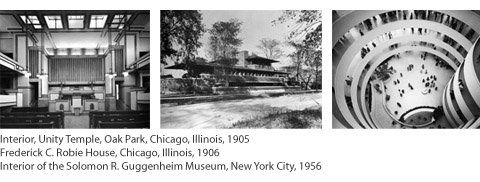
Luis Barragán (1902-1988)
- Mexican architect and engineer, known for his distinctive blend of modernism and traditional Mexican architecture
- Used bright colors, light, and shadow to create emotionally charged, contemplative spaces
- Ex: Casa Barragán, his personal home and studio, with its vibrant pink and yellow walls
- Incorporated natural elements like water, plants, and sunlight to create serene, meditative environments
- Ex: San Cristóbal Stables with its tranquil reflecting pool and geometric fountains
- Emphasized the spiritual and emotional dimensions of architecture, creating spaces for reflection and introspection
- Ex: Capuchin Chapel in Mexico City with its simple, austere interior and diffused natural light
Luis Barragán was a Mexican architect whose work defies easy categorization. While he was influenced by the principles of modernism, Barragán’s architecture was deeply rooted in the colors, textures, and spatial traditions of his native Mexico. He is known for his use of bright, saturated colors and his masterful manipulation of light and shadow to create emotionally charged, contemplative spaces.
Barragán’s personal home and studio, Casa Barragán, is a prime example of his unique aesthetic. Here, vibrant pink and yellow walls are juxtaposed with rough, textured stone and dark, shadowy recesses, creating a space that feels both modern and ancient, playful and profound.
Another key element of Barragán’s work was his incorporation of natural elements like water, plants, and sunlight. In projects like the San Cristóbal Stables, he used reflecting pools, fountains, and carefully framed views of the landscape to create serene, meditative environments that blur the boundaries between inside and out.
Above all, Barragán was interested in the spiritual and emotional dimensions of architecture. He sought to create spaces that would inspire reflection, introspection, and a sense of connection to something greater than oneself. The Capuchin Chapel in Mexico City, with its simple, austere interior and diffused natural light, is a powerful example of this approach.
Barragán’s influence can be seen in the work of many contemporary architects who share his interest in the sensory and experiential qualities of space. His legacy reminds us that architecture has the power not just to shelter us, but to move us, to inspire us, and to connect us to the deeper mysteries of the human experience.
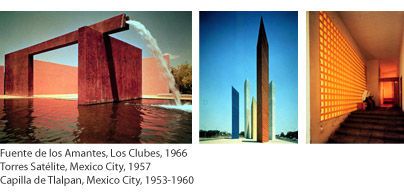
Ernö Goldfinger (1902-1987)
- Hungarian-born British architect and furniture designer, a key figure in the British modernist movement
- Known for his brutalist designs featuring raw concrete, geometric forms, and sculptural massing
- Ex: Trellick Tower in London, a high-rise apartment block with a distinctive concrete service tower
- Designed innovative, flexible interior spaces that could be easily adapted to changing needs
- Ex: Balfron Tower in London, with its duplex apartments and “streets in the sky” concept
- Integrated artwork and sculptural elements into his buildings, often in collaboration with artists
- Ex: Elephant and Castle development in London, featuring a giant concrete sculpture by Goldfinger himself
Ernő Goldfinger was a key figure in the British modernist movement, known for his uncompromising, brutalist designs. Born in Hungary, Goldfinger moved to the UK in the 1930s, where he quickly established himself as a leading proponent of the new, functionalist architecture.
Goldfinger’s buildings are characterized by their raw, exposed concrete surfaces, bold geometric forms, and sculptural massing. The Trellick Tower in London, with its distinctive concrete service tower and stepped profile, is perhaps his most famous work, and remains a landmark of brutalist architecture.
Beyond their striking aesthetics, Goldfinger’s buildings were also known for their innovative, flexible interior spaces. In projects like the Balfron Tower in London, he experimented with duplex apartments and “streets in the sky,” creating new models for high-density urban living that could be easily adapted to changing needs.
Goldfinger was also interested in the integration of art and architecture, and often collaborated with artists to create sculptural elements for his buildings. The Elephant and Castle development in London, for example, features a giant concrete sculpture by Goldfinger himself, which serves as a focal point for the complex.
Despite his significant contributions to British architecture, Goldfinger was a controversial figure during his lifetime, and his brutalist designs were often criticized as harsh, alienating, and inhuman. In recent years, however, there has been a growing appreciation for the boldness, creativity, and social ambition of his work.
Today, Goldfinger is remembered as a visionary architect who challenged conventional notions of beauty and comfort, and who pushed the boundaries of what was possible with concrete and steel. His legacy reminds us of the power of architecture to shape not just our cities, but our very ways of living and interacting with each other.
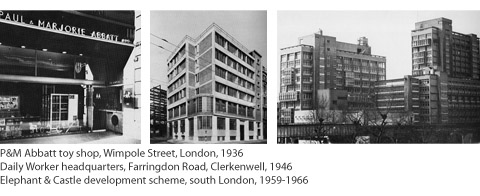
Giles Gilbert Scott (1880-1960)
- British architect known for his monumental, neo-classical designs that combined traditional forms with modern technologies
- Designed iconic public buildings and structures, including the Battersea Power Station and the red telephone box
- Ex: Battersea Power Station in London, a massive, symmetrical structure with Art Deco details and innovative engineering
- Pioneered the use of steel frame construction and other modern building techniques in traditional architectural contexts
- Ex: Bankside Power Station (now Tate Modern) in London, a brick-clad steel frame structure housing a vast turbine hall
- Emphasized the social and symbolic functions of architecture, creating buildings that served as landmarks and civic icons
- Ex: Liverpool Cathedral, a monumental, neo-Gothic structure that dominates the city skyline and serves as a focal point for the community
Giles Gilbert Scott was a British architect whose work bridged the gap between traditional and modern architecture. Known for his monumental, neo-classical designs, Scott created iconic public buildings and structures that combined historical forms with cutting-edge technologies and engineering.
One of Scott’s most famous works is the Battersea Power Station in London, a massive, symmetrical structure with Art Deco details and innovative steel frame construction. This project showcases Scott’s ability to adapt traditional architectural languages to the demands of modern industry and infrastructure.
Similarly, the Bankside Power Station (now Tate Modern) in London demonstrates Scott’s pioneering use of steel frame construction in a traditional architectural context. By cladding the steel frame in brick, Scott created a building that harmonized with its surroundings while also housing a vast, flexible interior space.
Beyond their technical and aesthetic qualities, Scott’s buildings were also known for their social and symbolic functions. Projects like Liverpool Cathedral, a monumental, neo-Gothic structure that dominates the city skyline, served as landmarks and civic icons, providing a sense of identity and pride for the communities they served.
Scott’s work reminds us of the enduring power of traditional architectural forms and the importance of creating buildings that serve not just practical functions, but social and symbolic ones as well. His legacy challenges us to find ways of adapting historical languages to the needs of the present, while also creating structures that inspire and uplift the human spirit.
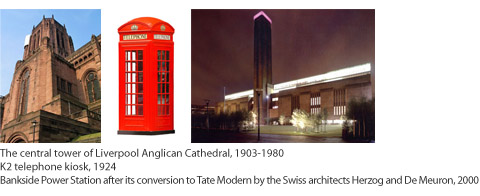
Konstantin Grcic
Product Designer (1965-)

By ‘defining function in human terms’ the German designer KONSTANTIN GRCIC (1965-) has developed a design language that combines formal rigour with subtle humour in the design products and furniture for manufacturers such as Authentics, Flos, Krups and Magis.

Ron Arad Product Designer + Architect (1951–)

Combining playful forms and experiments with advanced technologies, RON ARAD (1951-) has emerged as one of the most influential designers of our time. Born in Tel Aviv, he moved to London in 1973 to study architecture and made his name in the early 1980s as a self-taught designer-maker of sculptural furniture. He now works across both design and architecture.
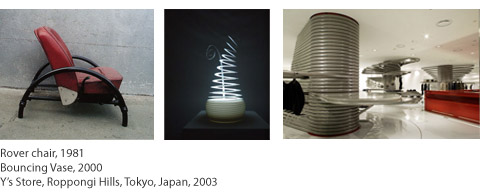
Jonathan Barnbrook
Graphic designer (1966- )

JONATHAN BARNBROOK is one of the UK’s most active graphic designers. Pioneering the notion of graphic design with a social conscience, Barnbrook makes strong statements about corporate culture, consumerism, war and international politics. Working in both commercial and non-commercial spheres, Barnbrook combines originality, wit, political savvy and
bitter irony in equal measures.
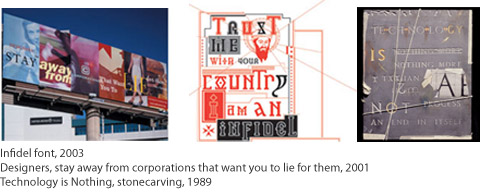
Saul Bass
Graphic Designer (1920-1996)

SAUL BASS (1920-1996) was not only one of the great graphic designers of the mid-20th century but the undisputed master of film title design thanks to his collaborations with Alfred Hitchcock, Otto Preminger and Martin Scorsese.
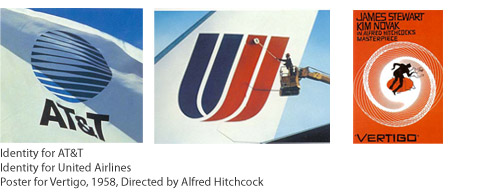
Manolo Blahnik
Shoe Designer (1942-)
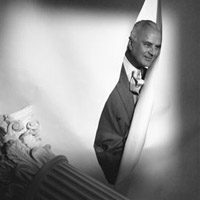
Working alone without assistants or apprentices, MANOLO BLAHNIK (1942-) is solely responsible for the design of every one of the thousands of shoes that bear his name. He has dominated shoe design since setting up in business in London in the early 1970s.
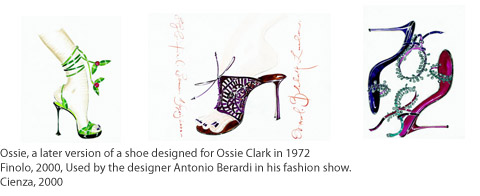
Robert Brownjohn
Graphic Designer (1925-1970)

Combining audacious imagery with ingenious typography, illustration and found objects, ROBERT BROWNJOHN (1925-1970) was among the most innovative graphic designers in 1950s New York and 1960s London, where he designed titles for James Bond films, graphics for the Robert Fraser Gallery and artwork for the Rolling Stones.
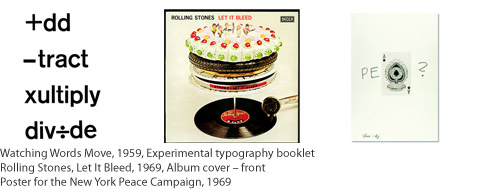
Isambard Kingdom Brunel
Design Engineer (1806-1859)
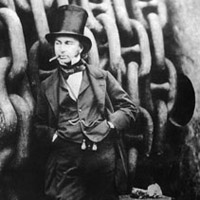
One of the great British engineers of the 19th century ISAMBARD KINGDOM BRUNEL (1806-1859) built twenty-five railways lines, over a hundred bridges, including five suspension bridges, eight pier and dock systems, three ships and a pre-fabricated army field hospital.

Sam Buxton
Product Designer (1972-)

From the MIKRO series of fold-up sculptures to his electroluminesent tables and clocks, the work of the British product designer SAM BUXTON is dominated by his experiments with advanced materials and technologies.
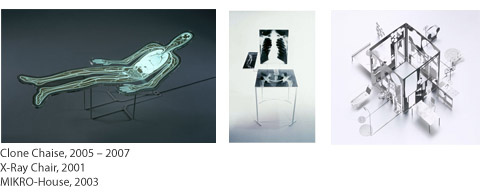
Matthew Carter
Typography Designer (1937-)

The most important typography designer of our time, MATTHEW CARTER (1937-) is one of the few designers whose work is used by millions of people every day. Having devoted the first half of his career to typefaces for use in print, such as Miller and Bell Centennial, he then pioneered the design of fonts for use on screen, notably Verdana for Microsoft.
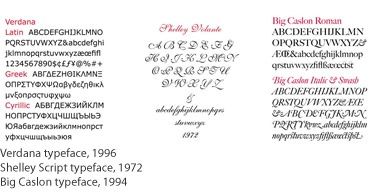
Hussein Chalayan
Fashion Designer (1970 – )

Hussein Chalayan is one of the most visionary designers working in fashion today. His first UK retrospective From fashion and back currently showing at the Design Museum, illustrates his innovative use of materials, meticulous pattern cutting and a progressive attitude to new technology.
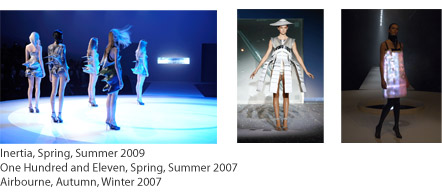
Luigi Colani
Aircraft and product designer (1928- )
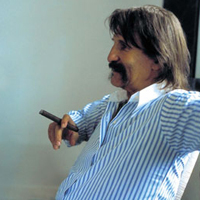
LUIGI COLANI is one the great mavericks of 20th century design with an independent spirit, a flair for showmanship and a willingness to engage the wider public that has kept him outside the design mainstream. With a background in car styling and aerodynamics, Colani has pursued an interest in imagining a world that does not yet exist – one of utopian architecture, high performance cars and huge supersonic aircraft flying many times the speed of sound and.
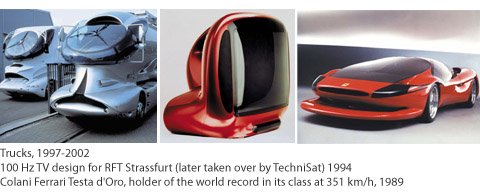
Joe Colombo
Product + Furniture Designer (1930-1971)
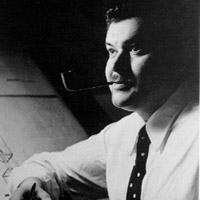
In his brief but brilliant career, JOE COLOMBO (1930-1971) produced a series of innovations which made him one of Italy’s most influential Italian product designers. From the Universale, the first chair to be moulded from one material, to the all-in-one Boby Trolley, everything Colombo created was intended for “the environment of the future”.
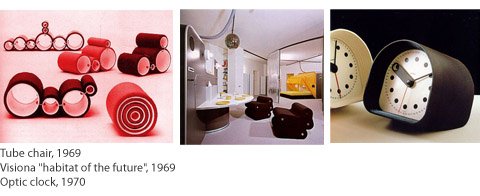
Joshua Davis
Multimedia Designer

JOSHUA DAVIS pioneered web design in the early 1990s and is now a master of the medium through his commercial work for Kioken in New York and experimental projects such as PrayStation for which he won the Prix Ars Electronica 2001, the prestigious digital art prize.
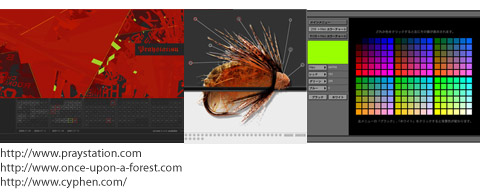
Christian Dior
Fashion Designer (1905-1957)

The most influential fashion designer of the late 1940s and 1950s, CHRISTIAN DIOR (1905 to 1957) dominated fashion after World war II with the hourglass silhouette of his voluptuous New Look. He also defined a new business model in the post-war fashion industry by establishing Dior as a global brand across a wide range of products.

Tom Dixon
Furniture Designer (1959-)

Both as a self-taught designer-maker in early 1980s London and as head of design at the Habitat retail chain and now Artek, the Finnish furniture manufacturer, TOM DIXON (1959-) has combined the creative with the commercial throughout his career.
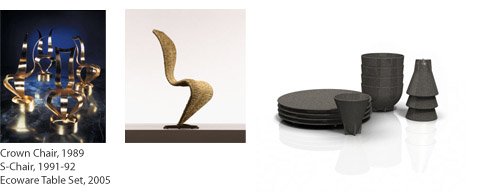
John Galliano
Fashion Designer (1960-)

JOHN GALLIANO (1960-) is one of the most influential fashion designers of our time. Born in Gibraltar, he grew up in London and launched his own label before becoming chief designer of France’s haute couture flagship, Christian Dior, in Paris.
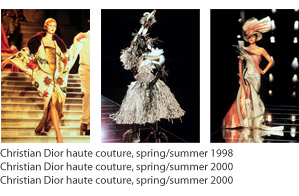
Martí Guixé
Product + Graphic Designer (1964-)

Dedicated to inventing “brilliantly simple ideas of a curious seriousness”, MARTI GUIXE divides his time between his native Barcelona and Berlin. Dubbing himself an “ex-designer”, he designs products for Authentics and shoe shops for Camper as well as conceptual projects.
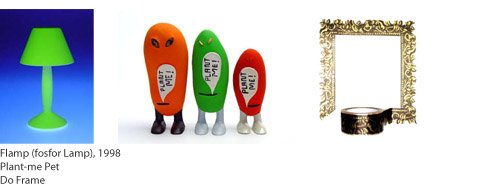
Alec Issigonis
Automotive Designer (1906-1988)

One of the most original car designers of the modern era, ALEC ISSIGONIS (1906-1988) is best known as the creator of the Mini, but also designed two more of the five best-selling cars in British motoring history – the Morris Minor and the Austin 1100.

Arne Jacobsen
Architect + Furniture Designer (1902-1971)
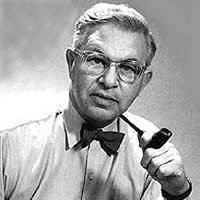
ARNE JACOBSEN (1902-1971) was one of Denmark’s most influential 20th century architects and designers. Both his buildings and products, like his Swan and Egg Chairs, combine modernist ideals with a Nordic love of naturalism.
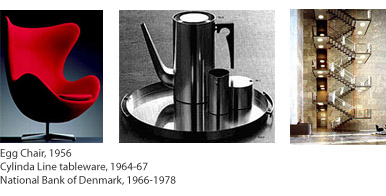
Michael Marriott
Product + Furniture Designer (1963-)
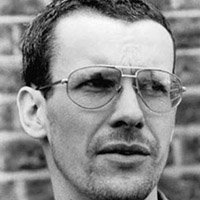
As a product designer and a curator, MICHAEL MARRIOTT (1963-) explores the influence of objects, and the way they are constructed, on our daily lives. His goal is to design “truly modern objects” through “the honest and appropriate use of material, process and function”.

Jonathan Ive
Product Designer (1967-)

The winner of the Design Museum’s inaugural Designer of the Year award in 2003 was JONATHAN IVE (1967-), senior vice-president of design at Apple whose innovations include the iPod and iMac.

Ross Lovegrove
Industrial/Product Designer (1958 -)

Highly experimental and with a commitment to transcending the boundaries between science, technology, design and architecture, ROSS LOVEGROVE considers himself more ‘evolutionary biologist’ than designer.

Alexander McQueen
Fashion Designer (1969- )

ALEXANDER MCQUEEN (1969- ) burst onto the fashion stage in 1992, courting controversy as headlines hailed him as the new enfant terrible. Though contentious and frequently misunderstood, he established the fashion label that is now internationally acclaimed and coveted without compromising his approach.

Jasper Morrison
Product + Furniture Designer (1959-)

JASPER MORRISON is one of today’s most influential industrial designers. Born in London, he is renowned for his ascetically elegant, quietly humorous style and has designed everything from a tray-table to a tram system.

Marc Newson
Product + Furniture Designer (1963-)

MARC NEWSON (1963-) is known for his funkily futuristic, but technically rigorous approach to design. Born in Sydney, he has worked from studios in Tokyo, Paris and, now, London, to design everything from a private jet to a Ford car.
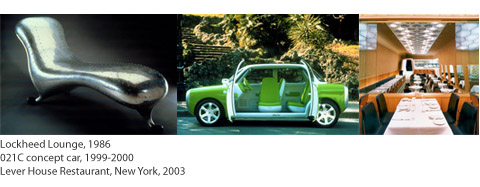
Isamu Noguchi
Designer + Sculptor (1904-1988)

ISAMU NOGUCHI (1904-1988) was an American-Japanese designer who originally trained as a sculptor and brought a sculptural sensibility to everything he created: lighting, furniture, gardens and stage sets.
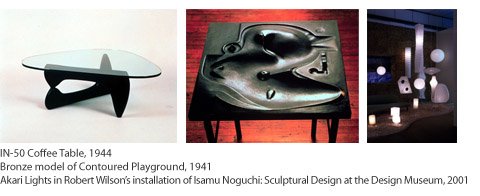
David Mellor
Cutlery Designer + Manufacturer (1930-)
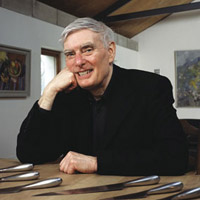
Combining the roles of designer, manufacturer, craftsman and retailer DAVID MELLOR (1930-) steered a unique position in late 20th century British design. Renowned as a designer and maker of cutlery, Mellor has also designed furniture, tools, ecclesiastical silver, traffic lights and a post box.
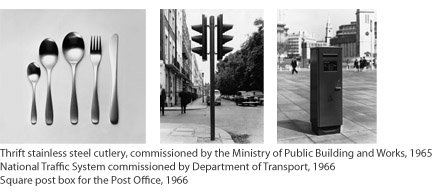
Jean Muir
Dressmaker (1928 – 1995)
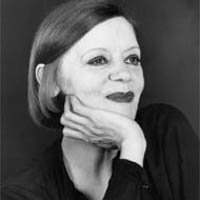
Legendary dressmaker JEAN ELIZABETH MUIR (1928 – 1995) made clothes that were both radical and classic, breaking the barrier between couture and ready-to-wear. The self-taught Muir made her name in the 1960s, creating a reputation for exquisitely tailored, timeless, feminine clothing. She has been hailed as the greatest dressmaker in the world, in a league with Madame Grès, Chanel and Vionnet.
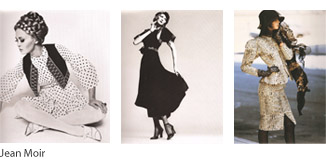
Chris O’Shea
Artist and designer

Chris O’Shea creates interactive work for both public institutions and private companies. In 2005 he was awarded First Class Honours in BSc MediaLab Arts at the University of Plymouth. Since then he has created work at AllofUs for Tate Britain, Onedotzero (at V&A Museum) and THEpUBLIC, at Moving Brands for the Muon launch in Milan and Ico Design for the Wellcome Collection. In 2006 he was the guest curator of the Cybersonica exhibition. He regularly writes on Pixelsumo and is one of the founding member of the event series, This happened.
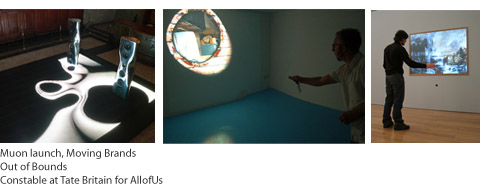
Ernest Race
Furniture Designer (1913-1964)

Textile and furniture designer, manufacturer, retailer – was one of the most inventive and challenging exponents of mid-century British design. Race’s highly personal design vocabulary, at it’s height in the immediate post-war period and at the Festival of Britain of 1951, was a fluid, skilled, and at times eccentric synthesis of Modernism with Victoriana, and of mass-production with intelligent improvisation. Race’s single most important contribution to modern furniture design was his articulation of the transition from the theoretical rigour of pre-war Modernism to the accessibility and optimism of post-war Contemporary.
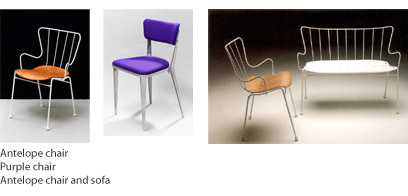
Dieter Rams
Industrial Designer (1932-)
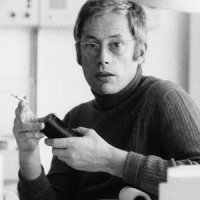
As head of design at Braun, the German consumer electronics manufacturer, DIETER RAMS (1932-) emerged as one of the most influential industrial designers of the late 20th century by defining an elegant, legible, yet rigorous visual language for its products.
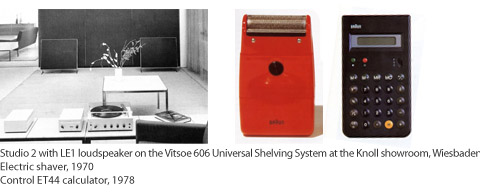
Jerszy Seymour
Product Designer (1968-)

JERSZY SEYMOUR (1968-) is a product and furniture designer whose work combines a raunchy humour with innovative use of materials. Born in Berlin, Seymour grew up mostly in London, but has lived and worked in Milan since 1999.
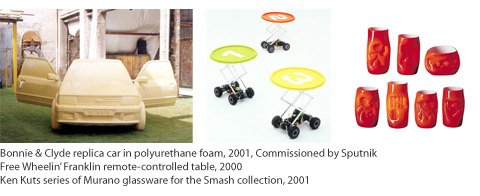
Peter Saville
Graphic Designer (1955-)
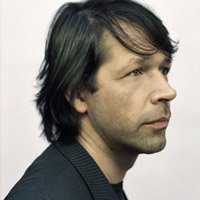
Ever since his first work for the fledgeling Factory Records in the late 1970s, PETER SAVILLE has been a pivotal figure in graphic design and style culture. In fashion and art projects as well as in music, his work combines an unerring elegance with a remarkable ability to identify images that epitomise the momen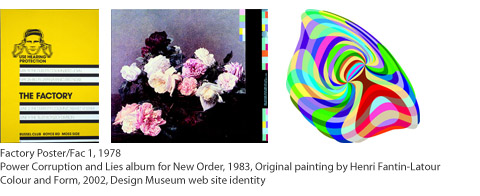 t.
t.
Stefan Sagmeister
Graphic Designer (1962-)

STEFAN SAGMEISTER (1962-) is among today’s most important graphic designers. Born in Austria, he now lives and works in New York. His long-standing collaborators include the AIGA and musicians, David Byrne and Lou Reed.
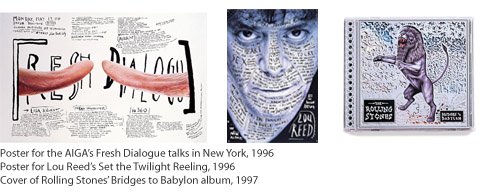
Ed Swan
Product Designer (1979- )
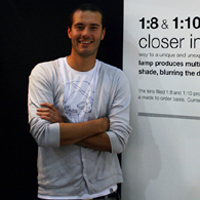
London-based designer ED SWAN creates ephemeral lighting effects that alter spatial perceptions. Inspired by an interest in camera obscuras, ancient image-making devices, Swan utilises these optical principals with an innovative use of materials to produce illusionary projections.

Richard Sweeney
Product Designer (1984–)

Richard Sweeney’s Folding Light series blurs the boundaries of design, art and craft. Combining artisan techniques with complex problem solving skills, Sweeney creates lighting designs based on unique sculptural forms.
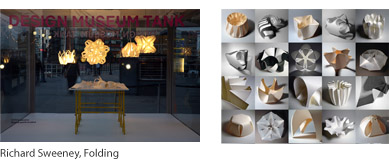
Philip Treacy
Hat Designer (1967-)

Surreal and sculptural, PHILIP TREACY’s (1967-) hand-made hats are feats of craftsmanship. Born in rural Ireland, Treacy designs haute couture and ready-to-wear hat collections from his London studio. He has also created hats for the couture collections of Karl Lagerfeld, Valentino and Alexander McQueen.
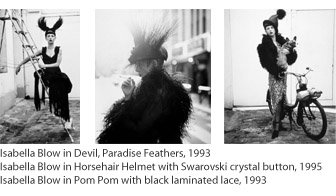
Verner Panton
Furniture Designer (1926-1998)
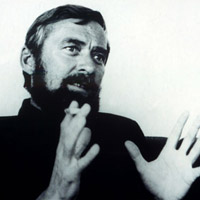
VERNER PANTON (1926-1998) was a master of the fluid, futuristic style of 1960s design which introduced the Pop aesthetic to furniture and interiors. Born in Denmark, he made his name there before settling in Switzerland in the 1960s.
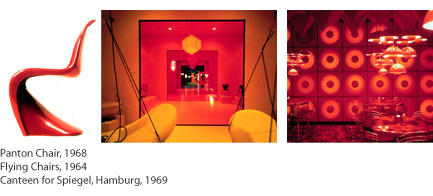
Phyllis Pearsall
Map Designer (1906-1996)
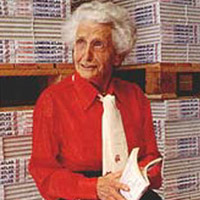
Working eighteen hours a day to walk 3,000 miles of London’s streets, the artist PHYLLIS PEARSALL (1906-1996) not only conceived, designed and produced the A-Z street atlas of London, but founded her own company to publish it. The A-Z remains one of the most ingenious examples of early 20th century information design.
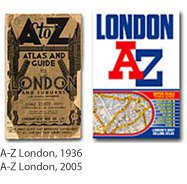
Vivienne Westwood
Fashion Designer (1941-)

VIVIENNE WESTWOOD (1941-) personifies the potent and subversive originality of British fashion. Her continual exploration and reinterpretation of history, combined with a tireless individualism, has cemented her reputation as the UK’s most culturally significant fashion designer.
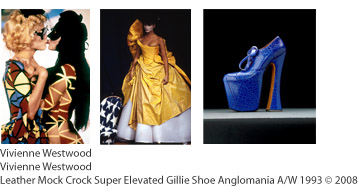
Robert Wilson
Theatre Director + Designer
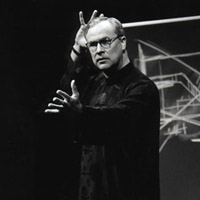
ROBERT WILSON is a theatre director, artist and designer who fuses sound, image, text and movement to create extraordinarily evocative stage sets, exhibitions and installations. He is based in New York and Long Island.
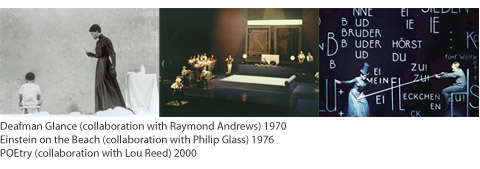
Ben Wilson
Industrial/Product Designer (1976- )
The work of British product designer BEN WILSON embodies a passion for bikes, skateboards and machinery. Wilson’s design aesthetic is imbued with a deep understanding of street culture and its inherent language. His work communicates a vibrant energy and his client list reflects this active nature including global brands such as Levis, Nike, Adidas, Stussy, Artemide and Audi.
Philip Worthington
Interactive Designer (1977-)

Focusing on large scale and tactile interactive experiences that engross and envelope the visitor, Philip Worthington (1977-) created Shadow Monsters, a digital version of the traditional shadow puppet, as part of his degree in Interaction Design from the Royal College of Art.

Michael Young
Product Designer (1966-)

MICHAEL YOUNG (1966-)is a British-born designer who works from studios in Brussels and Reykjavik to create technically rigorous, but always humorous products and furniture.
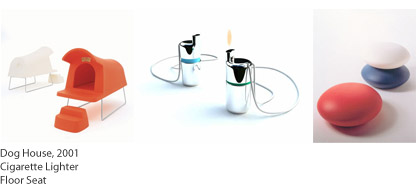
Pascal Anson
Product Designer (1973-)

One of the new generation of British product designers for whom narrative is an increasingly important element in their work, PASCAL ANSON (1973-) combines industrial production and improvisation to create products and furniture that tell a story while fulfilling their function.
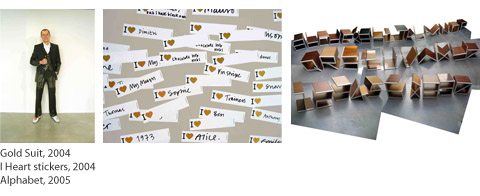
Assa Ashuach
Product + Furniture Designer (1969-)

By experimenting with advanced design and production technologies, the Israeli-born, London-based designer Assa Ashuach (1969-) redefines both the form and function of everyday products and furniture, while developing a surreal new design aesthetic.
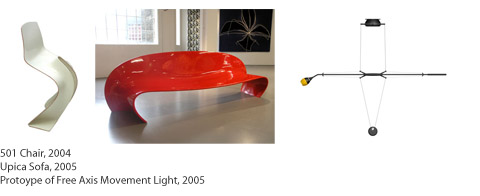
Mathias Bengtsson
Furniture Designer (1971-)

By experimenting with industrial materials and processes, MATHIAS BENGTSSON, the Danish-born, London-based furniture designer produces sculptural furniture which is visually arresting and technically innovative.
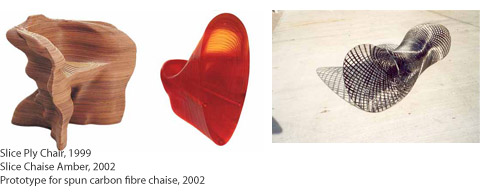
Sebastian Bergne
Product + Furniture Designer (1966-)

Working from Bologna and London, SEBASTIAN BERGNE designs products for companies such as Authentics, Habitat and Vitra which address the changes in our daily lives but in a gentle, unobtrusive way.
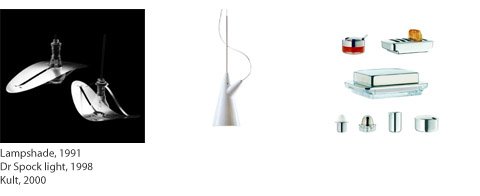
Flaminio Bertoni
Automotive Designer (1903-1964)
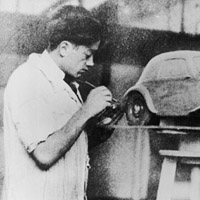
One of the 20th century’s most gifted automotive designers, FLAMINIO BERTONI (1903-1964) was responsible for designing the bodywork of such classic – and stylistically diverse – cars as the elegant Traction Avant, supremely functional 2 CV and alluring DS 19.
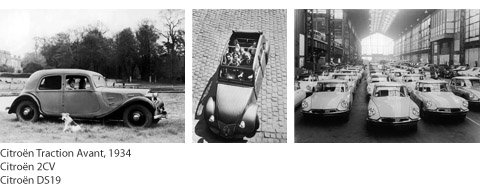
Derek Birdsall
Graphic Designer (1934-)
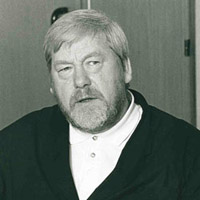
As a child, DEREK BIRDSALL (1934-) loved stationery shops: infinite stacks and reams of paper, pads, notebooks and ledgers; instruments for writing, duplicating and erasing; virgin ink and paper in endless configurations of possibility. He speculates that this feeling was inherited from his grandfather, a clerk in a chemical works, and by Birdsall’s admission, a fountain-pen fetishist.
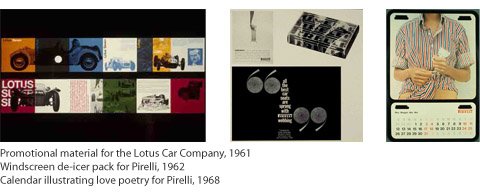
Irma Boom
Book Designer (1960-)

Many of the most beautiful books to have been designed in recent years are the work of IRMA BOOM. Born in Lochem, the Netherlands in 1960, Boom has won international acclaim for the iconoclastic beauty of her books.
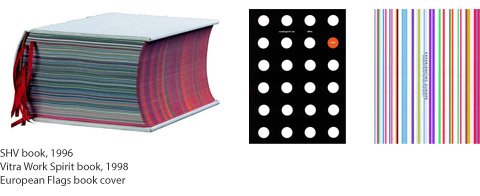
Tord Boontje
Product Designer (1968-)

Working on the cusp of design and craft, TORD BOONTJE, the Dutch-born, London-based product designer combines advanced technologies with artisanal techniques to create exquisite glassware, lighting and furniture.
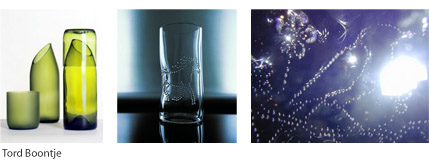
R. Buckminster Fuller
Inventor, Designer, Architect, Theorist (1895-1983)
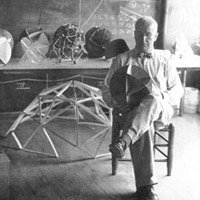
Driven by the design philosophy of “more for less”, RICHARD BUCKMINSTER FULLER (1895-1983) worked simultaneously on plans for houses, cars, boats, games, television transmitters and geodesic domes, all of which were designed to be mass-produced using the simplest and most sustainable means possible.
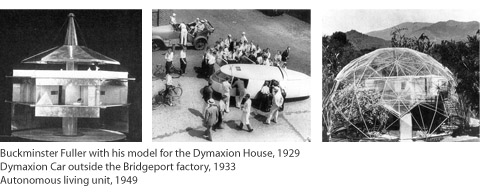
Achille Castiglioni
Product + Furniture Designer (1918-2002)
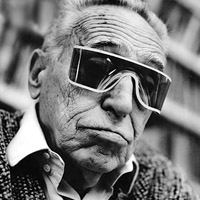
One of the most important industrial designers of the 20th century, ACHILLE CASTIGLIONI (1918-2002) produced more than 150 products during his career and forged enduring relationships with Italian manufacturers such as Flos in lighting, Zanotta in furniture and Alessi in home products.
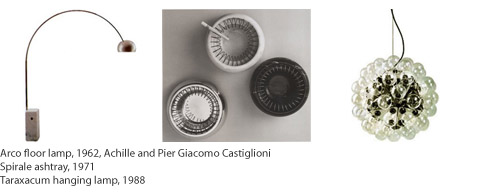
Wells Coates
Architect + Industrial Designer (1895-1958)
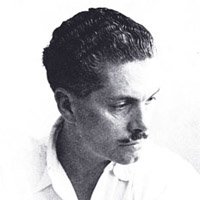
One of the pioneers of the emergence of the modern movement in British architecture and design during the 1930s, Wells Coates (1895-1958) also developed innovative approaches to housing design, notably in Lawn Road flats, as well as electrical products, broadcasting studios and yachts.
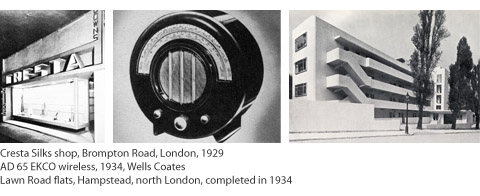
Christopher Dresser
Industrial Designer (1834-1904)
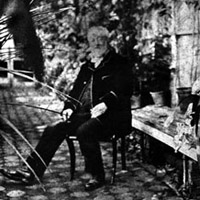
Among the first independent industrial designers, CHRISTOPHER DRESSER (1834-1904) championed design reform in 19th century Britain while embracing modern manufacturing in the development of wallpaper, textiles, ceramics, glass, furniture and metalware.
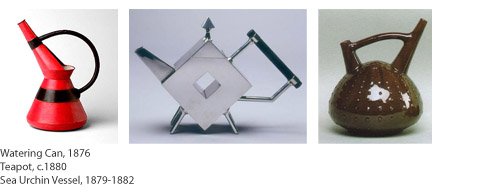
Matali Crasset
Product Designer

In her of objects and spaces, the French designer MATALI CRASSET encourages us to question the way we go about our daily lives. Born in 1965, Crasset worked for Philippe Starck for five years before opening her own studio in Paris.
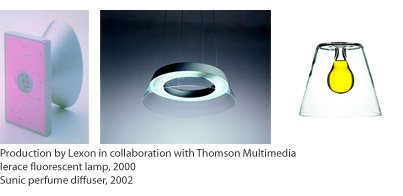
Alan Fletcher
Graphic Designer (1931-2006)
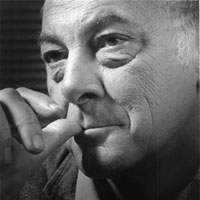
Synthesising the graphic traditions of Europe and North America to develop a spirited, witty and very personal visual style, ALAN FLETCHER is among the most influential figures in British graphic design as a founder of Fletcher/Forbes/Gill in the 1960s and Pentagram in the 1970s.
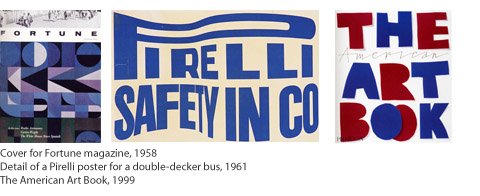
Abram Games
Graphic Designer (1914-1996)
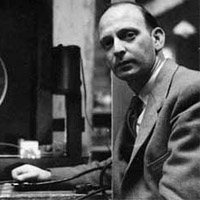
Some of the most memorable graphic images of mid-20th century Britain were the work of the designer ABRAM GAMES (1914-1996). As an Official War Artist during World War II, he designed over a hundred posters and later created the symbols of the BBC and the Festival of Britain.
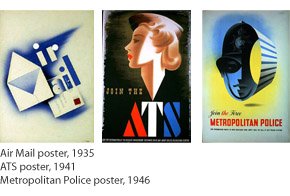
Thomas Heatherwick
Designer (1970 -)

One-part architecture, another-part product design, with an equal dash of sculpture and urban planning, Thomas Heatherwick’s body of work defies definition. The London-based designer has completed nearly 200 projects since establishing his studio in the mid-nineties, and with each new commission, merges engineering and design to give his projects a magical, transformative feel.
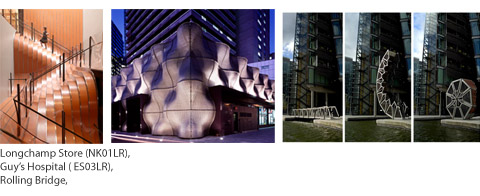
**Updape 07/09/09**
Wel well well now we have taken all your suggestions and put together another round up with Another 30 Designers that changed the world. Check it out and feel free to add more suggestions.

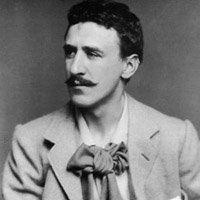

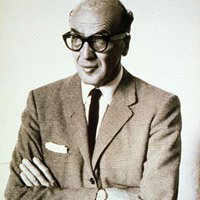

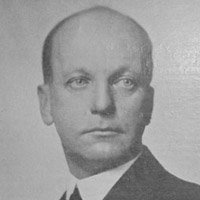
Product designers are scientists and innovators. They are able to turn questions that we all ask into a viable product. Students should look to innovators, designers and inventors for inspiration when designing their own science fair projects. These projects can lead to a lucrative career in product design.
Brilliant! But you forgot Oscar Niemeyer. Thanks for sharing
You also forgot Phillip Stark, c’mon STARK is among the very best.
@hashim O god there are so many out that list! well still a good list 🙂
Great list and information – but where is Armin Hofman?
I think you forgot Raymond Loewy, Harley Earl.
Great list, valuable effort. Forget about ranking, it’s just subjective and everybody may miss one of their absolute favorites.
It’s nice to see this discussion, but we would be able to make another list only with everyone’s favorites. 😛
As domainbargain said, “forget about the ratings” and enjoy. Every designer on this list is in the Design Museum, so they deserve at least attention, don’t you think? Thanks everyone!
You missed one of my favorites: Antoni Gaudí, http://en.wikipedia.org/wiki/Antoni_Gaud%C3%AD , the man who have made a lift up on Barcelona, and more!
ridiculous!, where´s gianni versace? EPIC fail
Where is Giorgetto Giuguiaro??? Batista Pininfarina??? Ferdinand Porsche??? Bertone??? or Philippe Starck??? Le Corbusier??? Ludwig Mies van der Rohe???
WTF
@Arturo Thanks for your additions 🙂 we cant covered all of them those are just a sample in no particular order.
i don’t think Philippe Starck should be there, i think his work is very overrated for the lack of practicality that they turn out to be (famous example: lemon squeezer). However, Raymond Loewy is a well established replacement.
Great idea but you really leave yourself open for disagreement (the heart of a good article but not good reporting). Anyway, my addition that can’t be ignored… the iconic George Lois. http://www.georgelois.com/
@Designhawg You are so right! Well but on second thought some disagreement could be nice.
Love the list.
However if we’re talking about designers that have shaped the world, I would have to agree with previous comments.
Laszlo Moholy-Nagy, Mies van der Rohe, Le Corbusier, Paul Rand, Pierre Cardin, Chanel, and Ferragamo are too big to mention.
No Paul Rand? Seriously?
Wow! This is a great list of designers. Makes me wonder though why Frank Gehry is not included. I believe that his designs and sense of aesthetics shaped the world as well.
This list can’t be complete without Mies van der Rohe!!!, Ero Arnio!! and Michael Thonet!!
Great compilation..anyway!
The one big one missing for me was Charles Eames. But Paul Rand, was equally bad to be missing. Will Wright for game design, or Ken’ichiro Ashida (Nintendo). Frank Gehry was a big miss as well.
I like the list.
But, where is Jimmy Choo?
Great compilation. Very inspiring. Hope to make it to the list someday.
@Arun Thanks. I wish I make it too 🙂
This post is fantastic!!! i love it.
Thank you for the information, i´m graphic design student and this post is so worthy.
Paul Rand?
nice list, but you missed out some of the most important! Jospef Muller Brockmann, Jan Tschishold.
@Toby Thanks toby, sure I miss lots of guys.. the list should be humongous!
I too am surprised at the omission of Paul Rand.
Really nice list. Simply wonderfull :))
Great list. But there are other people like Niemeyer, Karin Rashid, Philippe Starck, Eames Brothers, Sérgio Rodrigues and many, many more.
@james Take a look at this other article complementing this one: https://www.snap2objects.com/2009/09/01/another-30-designers-that-shaped-the-world/
However, none of that absolves old media from its creaky reluctance to embrace technology or to revamp its money-bleeding distribution model. ,
@Crazy mate would elaborate that stamen a little more please? 🙂 I am not sure to understand
how about Shigeo Fukuda? Milton Glasser?
how about Shigeo Fukuda? Kamekura? Milton Glasser?
Hello, i came to this blog although looking for something else, but to my joy i found this site. Keep doing what you are performing, its fantastic.
Informative list.. Those list are inspired me.. Thanks for this post..
Another contender?
See: http://www.johnlloyd.uk.com
JL
@jhon Lloyd I believe we have now 70+1 Designers that shaped the world! 🙂 Great job.
Thanks for the information. More related items you can find at
http://bestwordpressbusinessthemes.com
Verner Panton stole the design for the Panton Chair from Gunnar Aagard Andersen who designed the chair in 1953. Andersen had photographic evidence to prove it. I think it speaks a lot to the person that Panton was that he named the chair after himself, when he obviously knew he had not designed the chair. Andersen’s design was pure genius, something he rarely gets the credit for, especially when it’s erroneously referred to as the “Panton Chair”.
Thanks Steph, you are right. Unfortunately history still attributes that chair design to the wrong guy (not fair) and that happens all the time even to us.
Happened to my grandfather, Noel L. Flint, of Marx, Flint
& Schonne of Chicago. He was the architect and designer for most of the firm’s
architectural projects and furniture designs, but he was (almost) never given
credit. It was Samuel Marx that got all the credit. Just irks me that he
accomplished so much in his career, but hardly a mention in history.
Paul Rand is missing from this list?
Paul Rand is in the follow up article http://goo.gl/1lkf2 along with Warhol and Muller 🙂
Thanks for pointing that out. I was also missing Charles and Ray Eames – glad to see them added as a couple. A little bit odd to see Porsche’s war and post war work references without mentioning the 911 Porsche line.
But the other additions are great too, like Gehry, Tchichold and not to forget Le Corbusier. I would say the total list of something over 100 world changing designers would make a really nice booklet, with each designer receiving a double page.
Where is Mies van der Rohe? As an architect and furniture designer he was one of the most influential of the 20th century, I think he deserves a mention, don’t you think?
Excellent compilation!
Deiter Rams?
Some great choices, extremely fun to read, but I kept waiting for a few names that would be on my list. I don’t want my own list, it could go on for blocks. Please tell me, how did you pick the number you used?
where is Phillipe Starck, a french industrial designer famous for his democratic designs and a contributor in postmodernism visual arts movement, i think he should be included in the list. However, a comprehensive list of influential designers.
no Asian designer at all….
Gee, thanks for this cavalcade of men.
Wheres Massimo Vignelli or Wim Crouwel??
Eames?
Where is Raymond Louwy?
Hey would you mind sharing which blog platform you’re using?
I’m planning to start my own blog in the near future but I’m having
a difficult time making a decision between BlogEngine/Wordpress/B2evolution and Drupal.
The reason I ask is because your design and style seems different then most blogs and I’m looking for something unique.
P.S Sorry for getting off-topic but I had to ask!
Ahaa, its good conversation concerning this post
here at this weblog, I have read all that, so at this time
me also commenting here.
I love what you guys are up too. Such clever work and coverage!
Keep up the terrific works guys I’ve added
you guys to my own blogroll.
Generally I don’t read article on blogs, however I wish to say that this write-up very compelled me to
take a look at and do it! Your writing style has been surprised me.
Thank you, quite nice article.